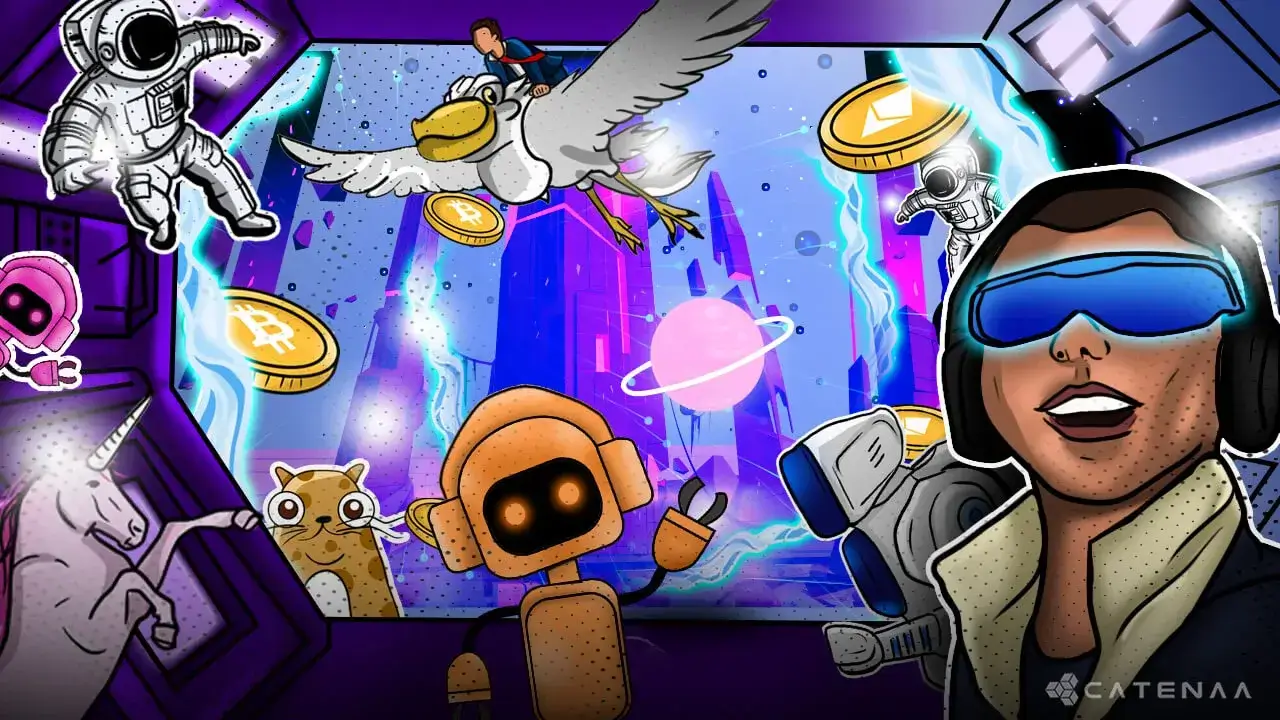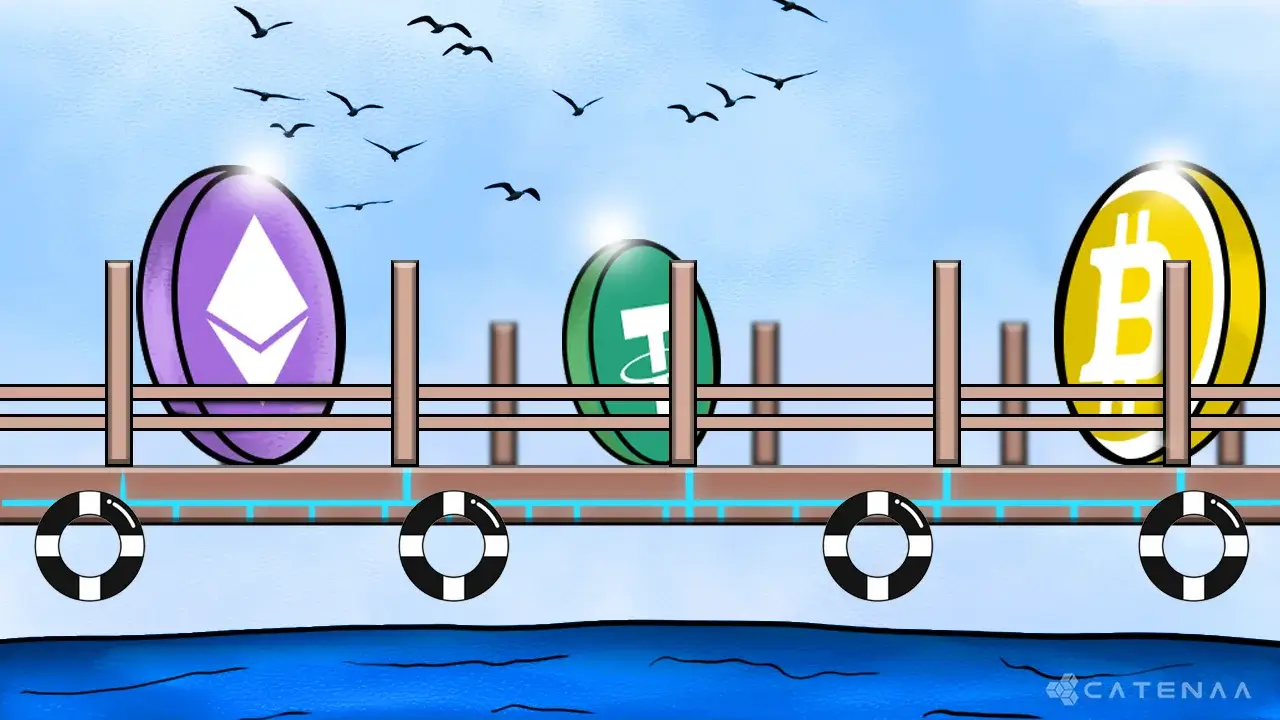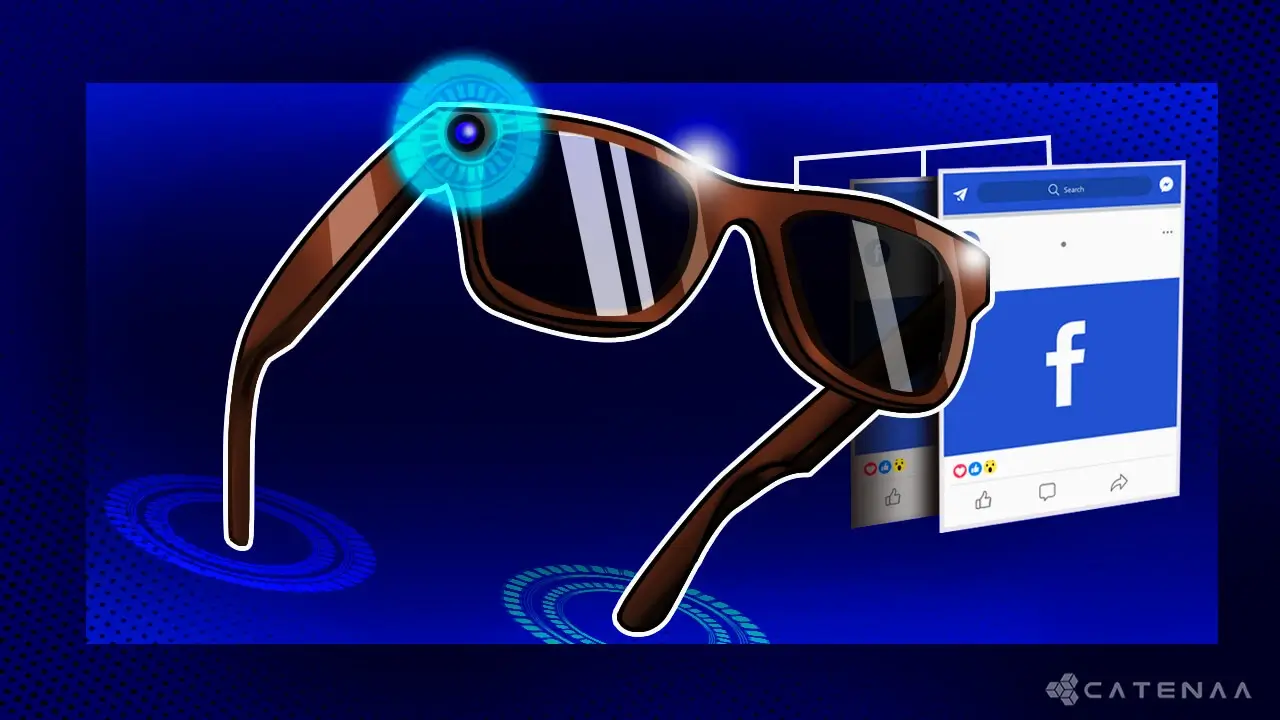Table of Content
In an era defined by digital connectivity, the metaverse stands as a testament to the power of shared passions. But what if I tell you that this concept can be elevated further? Enter the decentralized metaverse. Imagine an expansive universe where creativity knows no bounds and where ownership and control belong to the community, not centralized entities. In this article, we will be exploring the first decentralized metaverse, Decentraland.
What is Decentraland?
Decentraland is a 3D virtual world built on blockchain technology, enabling players to create their own games, tools, marketplaces, and content. It is a metaverse where users can become realtors, create anything they wish to create, and monetize that creativity.
Decentraland was launched in 2020 after being in development since 2015 and built on Ethereum by Ariel Meilich and Esteban Ordano. At the height of the crypto bull market in 2021, Decentraland underwent immense growth, with its market cap surpassing $9 billion. 1
A major contributor to this growth was major brands such as Samsung, Heineken, Nike, Coca-Cola, Dominos, and Adidas creating unique experiences in Decentraland, along with concerts hosted by world-famous names like Deadmau5, 3LAU, Paris Hilton, RAC, and Alison Wonderland. 2
How does Decentraland work?
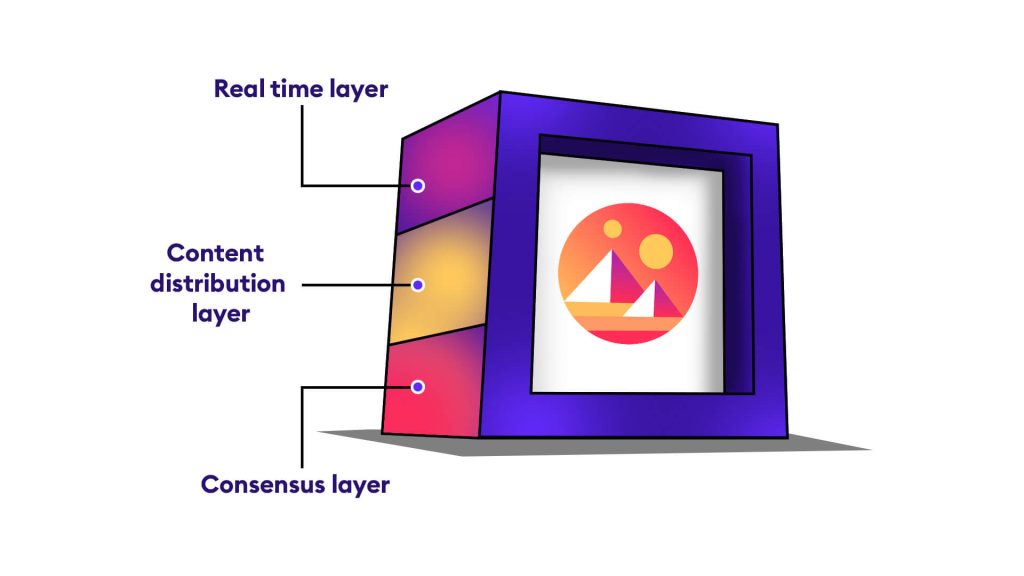
Decentraland’s three-layered protocol includes a consensus layer, a content layer, and a real-time layer. NFTs are heavily integrated. All in-game objects, from lands to avatar skins are NFTs, which allows users to claim ownership of those assets. Users can then monetize these assets by trading them on marketplaces.
Consensus layer
The consensus layer tracks the ownership of land plots via smart contracts. Land plots are identified by Cartesian Coordinates (x,y), and users who purchase land plots permanently own them in the form of Non-Fungible Tokens (NFTs). The consensus layer is responsible for maintaining the ownership of these NFTs.
Content layer
The content layer renders the necessary files from plot to plot. It is responsible for rendering the 3D graphics and other content that users see in Decentraland. The content layer is responsible for storing and serving all content in Decentraland through a global network of community- or user-owned content servers, or nodes.
Real-time layer
The real-time layer facilitates direct communication between avatars of different users. It is responsible for enabling users to interact with each other in real-time, play games, exchange collectibles, buy and sell digital real estate or wearables for avatars, socialize, and interact with each other. 3
The Economics of Decentraland
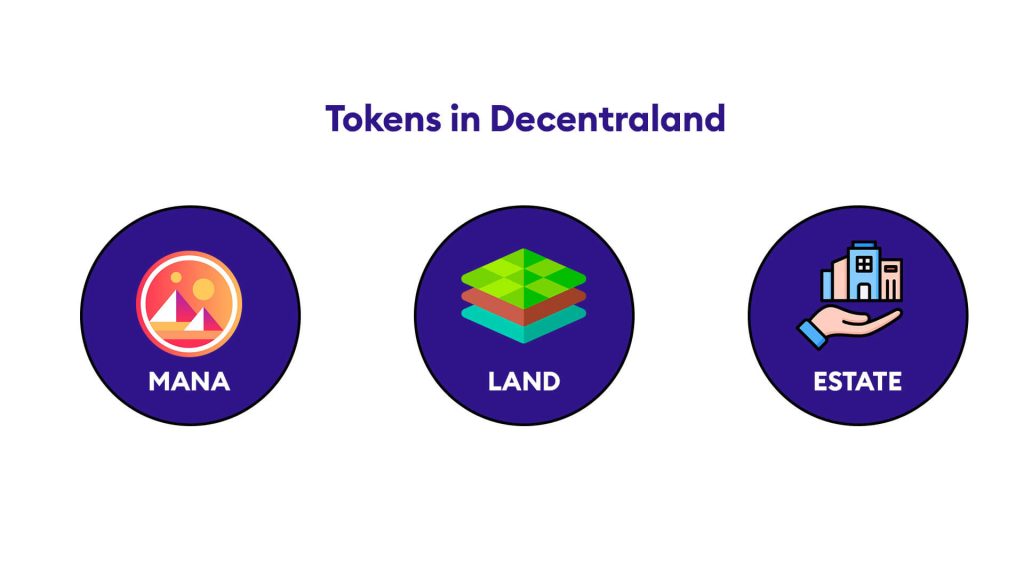
Decentraland has a unique economy that is based on its three native tokens: MANA, LAND, and Estate. MANA is a fungible token, which basically means that all MANA tokens are identical to each other, while no two LAND or ESTATE tokens are identical which makes them non-fungible tokens.
Decentraland’s economy is deflationary as every time users buy and register LAND, MANA tokens are “burnt,” which permanently removes coins from circulation, cutting the supply to increase market value.
Mana
The cryptocurrency and native token for Decentraland’s virtual world platform is called MANA. It is an ERC-20 token that is used to purchase everything within Decentraland, from wearables for your avatar to land. MANA is also used as the platform’s governance token. It can be bought on exchanges or acquired through selling collectibles and NFTs on the Decentraland marketplace.
Land
LAND is an ERC-721 token that represents parcels of digital land. One LAND token can be purchased for 1,000 MANA. LAND assets are NFTs that are broken up into virtual plots. Landowners have the ability to create and monetize their own environments, marketplaces, and applications.
Estate
The estate is an ERC-721 token that represents merged parcels of digital land. If a user were to collect multiple parcels of land adjacent to one another, they could be merged to create ESTATE tokens.4
How is Decentraland governed?

Decentraland is governed by a DAO (Decentralized Autonomous Organization). The DAO allows the creator’s original vision for the decentralized metaverse to be realized by handing over the controls to the people who actually spend time in decentraland, the users. Various rules and policies can be enacted using this such as content moderation and virtual land policies.
Mana is used as the governance token where one Mana is equal to one vote, while a LAND token will be the equivalent of 2000 votes. The amount of tokens a user holds will determine their voting power. To vote, users must lock their tokens in the DAO which will prevent them from spending those tokens during the duration of the vote. 5
Navigating the Virtual Real Estate Boom
The virtual real estate in Decentraland has drawn many comparisons to real-world real estate. Just like real-world real estate the value of the land plot depends on where it is located in Decentraland, and the values are subjected to various market forces. The ownership of virtual real estate has become something of a status symbol among early adopters and they have raked in massive profits as a result.
Metaverse real estate values reached eye-watering prices in 2021, with one plot selling for a record €2.49 million 6. This real estate boom can partly be attributed to big brands like Atari, Samsung, Miller Lite, and Adidas staking their claims on these virtual worlds 7. Although the virtual real estate market has been devastated due to the crypto winter we experienced during 2022 and 2023, speculators are hopeful of a recovery taking place in the broader crypto market.
Decentraland and it’s Impact on the Future of Social Interaction
Decentraland’s decentralized economy could promote social mobility, allowing a person with a great idea and the ability to convince the community of its value to scale it quickly and effectively without requiring a substantial capital investment upfront.
Real-time multisensory interactions (RMSIs) have the ability to increase social presence and produce positive outcomes. Further, Social VR has neurodivergence and inclusivity benefits, allowing people to experience more enjoyment, self-exploration, and relatedness regardless of physical limitations.8
To wrap things up…
Decentraland’s open and long-lasting social ecosystem, unique approach to governance and decentralization, and new pathways for businesses and creators to mingle with their audience are other ways it impacts the future of social interaction. The potential for social mobility through decentralized economies is significant, and Decentraland presents a new and exciting avenue for marketing and brand engagement.
- Coinmarketcap: www.coinmarketcap.com[↩]
- Sandstorm: www.sandstorm.com[↩]
- Decentraland whitepaper: www.decentraland.org[↩]
- Gemini: www.gemini.com[↩]
- Builtin: www.builtin.com[↩]
- Euronews: www.euronews.com [↩]
- Influencermarketinghub: http://www.influencermarketinghub.com[↩]
- Decentraland: https://www.linkedin.com/pulse/social-metaverse-its-impact-future-society-martin-petkov[↩]
